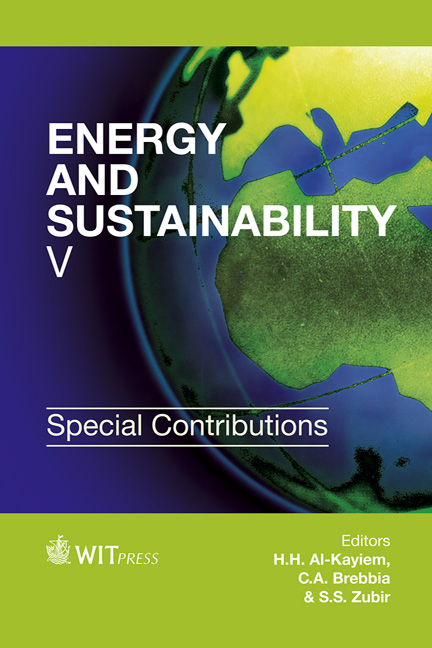Optimising Isochrysis Sp. Carbon Fixation: A Step Towards The Greening Of Fossil Fuel
Price
Free (open access)
Transaction
Volume
206
Pages
10
Page Range
183 - 192
Published
2015
Size
399 kb
Paper DOI
10.2495/ESS140161
Copyright
WIT Press
Author(s)
L. Yahya, M. N. Chik, I. Harun, M. H. Boosroh
Abstract
As concerns over global warming are increasing, a great deal of research on carbon capture has been carried out. Among various CO2 utilization technologies, biological methods – particularly ones using microalgae photosynthesis – have several advantages. This natural means of capturing emitted CO2 through photosynthetic microalgae, while producing some value-added by-products, can be regarded as economically viable and more sustainable. In this study, marine microalgae Isochrysis sp. was cultured using a 2×10−L customized bubble column photobioreactor skid to determine the optimum operating condition (pH, temperature, gas flow rate and luminance) towards highest carbon fixation rate. Twenty-one experimental runs were carried out in a lab-scaled photobioreactor supplied with simulated flue gas, containing O2, SO2, NO2, CO2 and CO. Illuminance is available through units of Philip’s T5 type fluorescent bulb with timer-control. Automatic data logging was made possible through Dewetron’s DEWE 43 data acquisition system. A carbon fixation ability calculation was made by comparing the gained dry weight between first and last days, taking into account the approximate biomass molecular weight in the photosynthesis reaction. Design of the experiment and optimization analysis was carried out using Design Expert Software 8.0. Results indicate that experimental simulations with temperatures of 300°C, pH 7.5, luminance of 1500 lux and a 0.15 liter/min gas flow rate give the highest fixation rate of 3.68 g CO2/day. Thus, this finding shall be useful in utilizing the capabilities of Isochrysis sp. as the biological carbon fixer in neutralizing carbon emissions from power plants.
Keywords
CO2 emission, carbon capture, flue gas, microalgae, optimization





